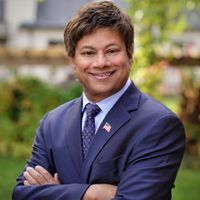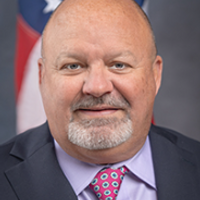Michigan’s 13th Congressional District
Michigan’s 13th congressional district is located in Southeast Michigan and contains large portions of Detroit and Wayne County. It has a rich political history and has consistently elected Democratic representatives. Understanding the district’s representation, demographics, election results, and key issues provides insight into this important area.
History and Background
Early History
The 13th district was formed in the early 1960s after Michigan lost a seat in the U.S. House of Representatives following the 1960 census. Democrat John Conyers Jr. began representing the district in 1965 and served for over 50 years until resigning in 2017. He was succeeded by Democrat Rashida Tlaib in 2018.
Recent History
In 2018, Brenda Jones briefly held the seat for several months after winning a special election to complete Conyers’ term. However, Tlaib defeated her in the regular primary that August. In 2021, Tlaib opted to run in the newly redrawn 12th District instead. Democrat Shri Thanedar won the open 13th District seat in 2022.
Representation and Demographics
Current Representative
The current representative is Shri Thanedar, first elected in 2022. He is the first Indian-American to represent Michigan in Congress. Prior to his election, he ran unsuccessfully in the 2018 Democratic gubernatorial primary.
Voting Patterns
The 13th District is heavily Democratic. Thanedar won the 2022 general election by over 45 percentage points. Donald Trump received only 3% of the vote here in 2020. The district has voted overwhelmingly Democratic in presidential, congressional, and state-level races for decades.
Demographics
The district is nearly 75% African American with most of the population centered in Detroit. There are also sizable Arab American and Hispanic communities. The median income is lower and poverty rates are higher compared to national averages.
Election Information
Recent Election Results
In 2022, Thanedar easily defeated Republican candidate Martell Bivings by a margin of over 45 points. Bivings won less than 25% of the vote.
In 2020, Rashida Tlaib won re-election over Republican David Dudenhoefer by 60 points. Tlaib received over 78% of the vote.
Redistricting Changes
Following the 2020 census, Michigan lost a congressional seat. The district boundaries were slightly reconfigured during the redistricting process but the 13th remains a strongly Democratic urban district.
Key Issues and Priorities
Economy and Jobs
Improving the economy and creating more jobs are top priorities. The district was hit hard by economic decline and has higher unemployment compared to state and national averages.
Healthcare Access
Access to affordable, quality healthcare is another key concern. The uninsured rate is high, at over 15% of residents. Better healthcare options and coverage are needed.
Education
Boosting education and school funding is important for the district. Test scores and graduation rates lag behind state benchmarks. College affordability is also an issue.
Infrastructure
Upgrading infrastructure such as roads, bridges, water systems, and broadband internet is a priority. Much of the infrastructure is outdated and in need of repair.
Conclusion
Michigan’s 13th Congressional District has a long history of Democratic leadership. Understanding its representation, demographics, election results, and policy priorities provides insight into this urban district. Recent changes such as new leadership and redistricting have shaped its political landscape. The district faces challenges like economic decline, but its engaged residents and leaders are focused on creating positive change.
FAQs
Who is the current representative?
The current representative is Democrat Shri Thanedar, first elected in 2022.
How long has the district elected Democrats?
The 13th District has elected Democrats consistently since the 1960s. It is considered a very safe Democratic district.
What are some key demographics?
The district is nearly 75% African American with large Arab American and Hispanic populations. The median income is below average.
How did redistricting impact the 13th District?
Redistricting slightly changed the 13th District boundaries but it remains a strongly Democratic urban district.
What are some top policy issues?
Key issues include the economy, healthcare, education, infrastructure, and jobs. The district struggles with poverty, unemployment, and population decline.








